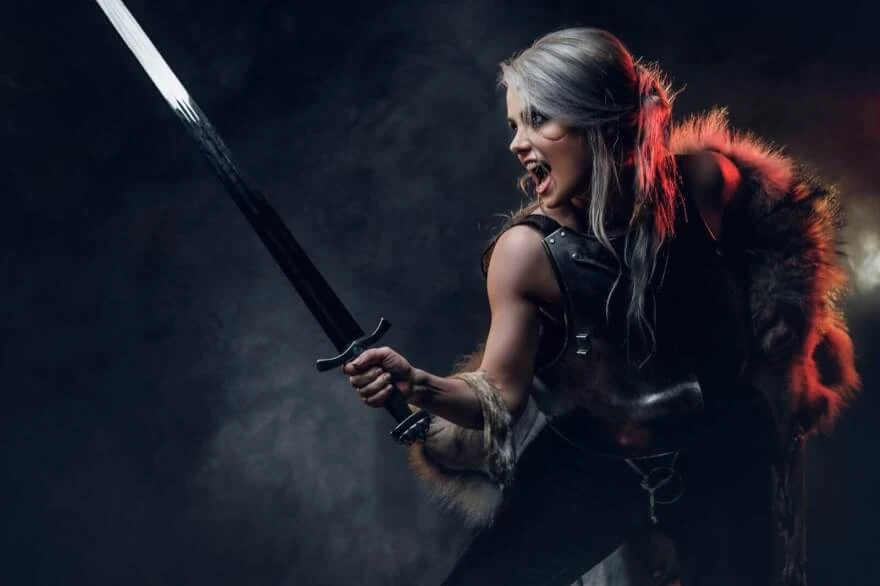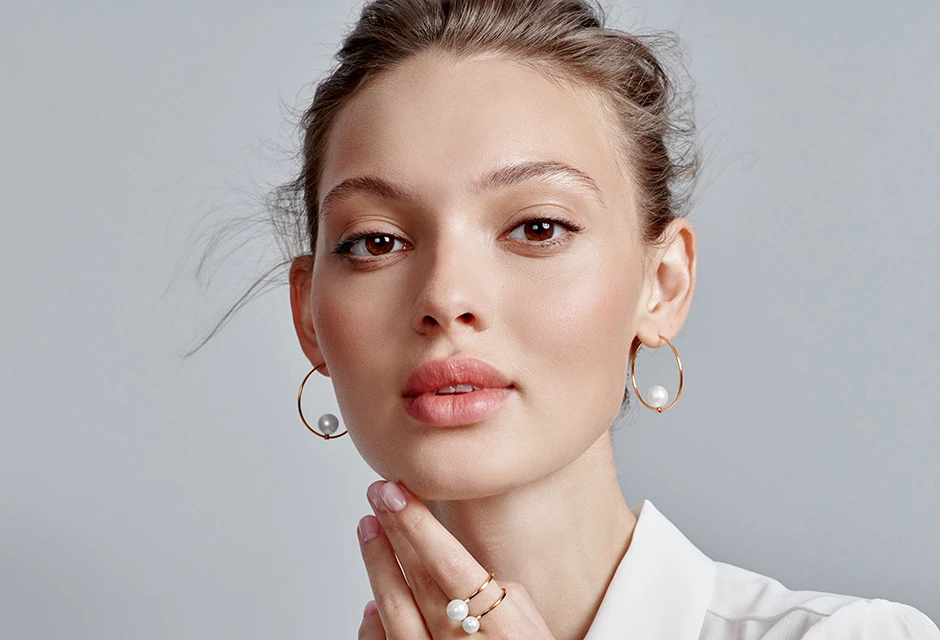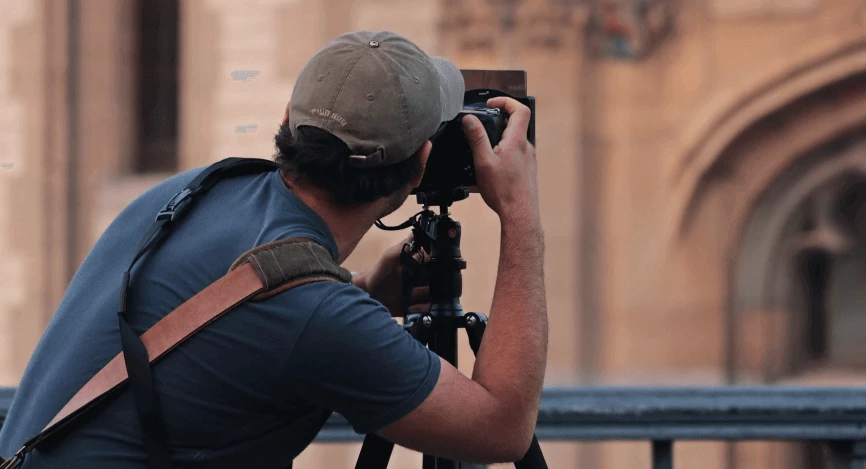How to do cosplay photography: Tips and tricks

- Preparing for a cosplay photoshoot
- Working with cosplayers
- Communication is a key to photoshoot cosplay
- Creative Collaboration
- Feedback and Direction
- Creating atmosphere and mood
- Jon Snow from the "Game of Thrones”
- Lara Croft from "Tomb Raider"
- Sailor Moon
- Technical aspects of the photoshoot
- General Gear and Settings
- Lenses
- Composition Techniques
- Additional Considerations
- Capturing action and movement
- Showcasing cosplay details
- Post-processing of photos
- Color grading
- Attention to Details in Editing
- Special Effects
- Ethical considerations
Cosplay, a vibrant fusion of the words "costume" and "play," is an art form where individuals, known as cosplayers, dress up in elaborate costumes to embody their favorite characters from various realms of pop culture including movies, anime, comics, and video games.
In this guide, we delve into different aspects of cosplay photoshoots, starting from where to find cosplayers and moving on to the technical aspects, mood, atmosphere, setting, editing, and ethical considerations. Whether you're a seasoned photographer looking to explore this colorful genre or a cosplayer wanting to immortalize your creations in stunning detail, this guide aims to equip you with cosplay photography tips and skills to capture your character in all its glory.
Preparing for a cosplay photoshoot
Before getting into actual cosplay photoshoots, you may ask yourself “Where do I find these cosplayers?”. So here is a list of events and strategies you can apply in the initial stage:
- Conventions: If you are in the United States there are a lot of conventions going on all year long, especially if you are in a coastal state, you can go to a lot of them. There are a few ways to do cosplay photos at the conventions:
- Take hot shots: Simply roam the convention floor to spot cosplayers. When you see a costume that captures your interest, approach the cosplayer and politely ask if you can take their photo.
- Scheduled Photoshoot: If you're aiming for more controlled and composed photographs, consider setting up a full photoshoot. This allows for choosing ideal poses and locations, thus enhancing the quality of your images.

- Cosplay Friends: If you have never done cosplay photos before, you might want to create a good portfolio first to prove yourself as knowing the subject. For that, you can find practice with your friends. You will be surprised that you might actually have a lot of friends that do cosplay. Message friends who you know watching anime or playing some video games or manga-reading friends if they are up for a cosplay photoshoot. Even if they have no previous experience in doing cosplay, they might get interested in giving it a try in the same way as you are interested in getting such photos as a photographer. So maybe you two can start together!
- Cosplay Meet Ups: Many cities host cosplay meetups, often organized through social media platforms like Facebook. These gatherings provide a relaxed atmosphere where you can connect with cosplayers. By attending these meetups, you get to practice your photography in a less formal setting and build relationships with local cosplayers. These connections can lead to future photoshoots, offering opportunities to shoot in diverse locations and settings at your mutual convenience.

By understanding these venues and strategies, you're well on your way to setting up successful and exciting cosplay photoshoots. As we move forward in this guide, we'll explore how to work effectively with cosplayers, create atmospheric shots, manage technical challenges, and more to ensure your cosplay photography stands out.
Working with cosplayers
As you have your cosplayers found it is crucial to understand the workflow. Working with cosplayers you should treat them as models and beyond, considering their vision, their own, and their character’s personality. More than just dressing up, cosplay involves a deep level of craft and creativity, as enthusiasts meticulously recreate their chosen character's attire, makeup, and even their mannerisms, bringing fictional worlds to life.

Communication is a key to photoshoot cosplay
Before the photoshoot, engage in detailed discussions with the cosplayers about their vision and expectations. Understanding the character they portray and the narrative they wish to convey helps you plan your shots more effectively. This conversation should cover everything from poses to the preferred setting, ensuring that both parties are on the same page.
Creative Collaboration
Encourage cosplayers to contribute their ideas during the shoot. They often have creative visions of how they want to depict their characters, and combining their insights with your technical expertise can lead to stunning results. This collaboration not only enriches the photo session but also makes it more enjoyable and fulfilling for both parties.

Feedback and Direction
Provide gentle guidance on poses and expressions to help cosplayers look their best on camera. Feedback should be constructive and encouraging to maintain a positive atmosphere throughout the shoot. Similarly, be open to feedback from the cosplayers, as they may have specific desires or adjustments they'd like to see.
Creating atmosphere and mood

Cosplay photography is not merely about taking pictures of attractively dressed individuals; it's about storytelling through the lens, creating a narrative that complements the character and the setting, and enhancing the visual spectacle of the costume itself. It demands a keen eye for detail, an understanding of the character's universe, and the ability to collaborate creatively with the cosplayers. In this regard, following the character’s universe, you want to conduct a cosplay photoshoot in an environment that complements the atmosphere and mood.
Choosing photoshoot locations is crucial here. So here we come up with cosplay photoshoot ideas with certain examples of how the venue or the environment complements the depicted cosplay character:
Jon Snow from the "Game of Thrones”

For a character like Jon Snow, whose storyline is deeply intertwined with cold, rugged northern landscapes, choosing a snowy forest or a rocky, mountainous terrain can dramatically enhance the authenticity of the shoot. The stark, harsh backdrop not only complements his battle-worn costume but also reflects the grim atmosphere of the North and the Wall, key elements of his character's storyline.
Lara Croft from "Tomb Raider"

Lara Croft is synonymous with adventure and exploration, making ancient ruins or dense jungles perfect settings for a cosplay shoot. Capturing her in an environment that suggests remote archaeological digs or treacherous expeditions helps to convey her role as a fearless explorer. This setting not only highlights her iconic gear and attire but also aligns with the adventurous spirit of the character.
Sailor Moon

The bright, colorful aesthetic of Sailor Moon, along with her youthful and vibrant personality, is best complemented by urban settings that are lively and full of energy, or whimsical backgrounds that reflect the magical elements of the series. An urban park with cherry blossoms or a cityscape at night, with lights blurring into bokeh, can create a fantastical yet grounded environment that mirrors the dual life she leads.
Choosing a location that resonates with the character’s world not only enriches the visual narrative but also deepens the connection viewers have with the photo, evoking stronger emotional responses and appreciation for the cosplay effort. This strategic pairing of character and environment ensures that the photographs tell a story that extends beyond the costumes, into the realm of true character embodiment.
Technical aspects of the photoshoot
From the technical standpoint, we focus on camera and lens choice considering camera settings for different locations and the environment where we conduct our cosplay photoshoot.

General Gear and Settings
Regardless of location, using a full-frame camera is often preferred in cosplay portrait photography for its superior image quality and better performance in low-light conditions, which can be particularly useful in varied lighting environments. A typical starting point for camera settings might include shooting in RAW format for maximum post-processing flexibility, setting the aperture between f1.8 and f2.8 to keep the focus on the cosplayer while softly blurring the background, and adjusting ISO and shutter speed according to the lighting conditions.
Lenses

The choice of lens can greatly influence the storytelling aspect of your photos. For studio shoots, where you control the lighting and backdrop, a 50mm or 85mm prime lens is ideal for sharp, detailed portraits with flattering compression and minimal distortion. These focal lengths help in keeping the character in focus while softly blurring out the less important elements.

For outdoor shoots, where the environment plays a crucial role in framing the story of the character, a wide-angle lens can be invaluable. It allows you to capture expansive backgrounds that are significant to the character's universe while still focusing on the detail and emotion of the cosplayer's expression and pose. For instance, capturing a Viking character with a wide-angle lens allows for dramatic shots that incorporate sweeping landscapes, emphasizing the character's connection to their rugged, natural environment.
Composition Techniques
Implementing basic composition techniques like the rule of thirds can enhance the visual impact of your shots. Placing the cosplayer off-center can make the composition more dynamic and give context by including interesting background elements that relate to the character’s story. Using leading lines — such as pathways, trees, or even urban structures can guide the viewer’s eye to the cosplayer, emphasizing their presence and integrating them more deeply into the setting.
Additional Considerations
When shooting outdoors, pay attention to natural light and consider the time of day — the golden hour, just after sunrise or before sunset, provides soft, diffused light that can dramatically enhance the mood of the image. For indoor shoots, controlled lighting setups using softboxes or umbrella lights can help mimic this natural light effect, providing consistency and highlighting the intricate details of the costumes.
Capturing action and movement

For dynamic action shots, increase your shutter speed to at least 1/500th of a second to freeze motion effectively. This is crucial for outdoor shoots where characters, such as superheroes or action-oriented anime characters, are involved in rapid movements. Use continuous shooting mode (burst mode) to take multiple shots in quick succession, ensuring you capture the peak action moment. Employing a wider aperture can help maintain focus on the cosplayer while blurring out distracting elements in fast-paced scenes.
Showcasing cosplay details
To highlight the intricate details of cosplay costumes, use a narrower aperture (f/8 to f/16) for greater depth of field in your shots. This setting is particularly useful in studio environments where every stitch and texture needs to be visible and sharp. Consider using a macro lens for extreme close-ups of costume elements such as jewelry, embroidery, or weapon details. Adequate lighting is key; in a studio, use a combination of spotlights and soft lights to illuminate the costume details without casting harsh shadows.

Post-processing of photos
After you have done your first cosplay photoshoot, let’s get your editing done!
Editing cosplay could be a little bit different than another type of photography because you are working with people who are dressing up in a character from a video game, a manga, an anime, or some other source. In this way, you may consider some face corrections to find a better match between the cosplayer and their character. If you do not know anything about the character that you shot, it is recommended to do some research so you can have a much more enjoyable time when you are doing editing. After the research, you get a better grasp on what details to focus on in editing, what to emphasize, and what detail to keep out of focus.
Color grading

When editing, pay special attention to color grading. This can involve adjusting the hues to match the typical palette of the character’s universe, enhancing the mood or atmosphere. For instance, a character from a dark, dystopian series might benefit from a cooler, desaturated color scheme, while a character from a vibrant fantasy world might look best with bright, vivid colors.
Attention to Details in Editing
Additionally, focus on the critical details that define the character. Enhance elements like eye color, weaponry, or special costume details to make them stand out. Use selective focus and vignetting to draw attention to these features while possibly softening backgrounds to reduce distractions.
Special Effects

Consider also the use of effects such as adding artificial lens flares, light bursts, add wings or even integrating textures to create a more immersive scene that feels lifted from the character’s world. However, it’s vital to balance these effects to maintain the authenticity of the cosplay and avoid over-processing, which can detract from the character’s portrayal. By applying these targeted edits, you can elevate your cosplay photos from simple portraits to compelling narratives that honor the spirit of the original character.

But remember, no editing will fix a shot that was initially set badly. The preparation stage is key, so setting up a costume, an environment, and decorating your cosplayer is also crucial to getting the best cosplay photos. Consider these makeup tips from our dedicated article that will help you to avoid over-editing especially when it comes to face retouching. If you struggle with software like Adobe Photoshop or Lightroom, you may also consider getting a photo editing app such as RetouchMe where our editors do the magic by manually retouching any type of photos for precision and quality.
Ethical considerations
Shooting cosplay has a lot of etiquette that is very different than shooting with models, and expectations are very different. If you are familiar with shooting models, this doesn’t mean that you know how to shoot cosplayers.

- First and foremost, always obtain consent before photographing a cosplayer. This includes discussing how the photos will be used and ensuring the cosplayer is comfortable with the poses and settings. Transparency regarding the scope and purpose of the shoot helps build trust and cooperation.
- It's also important to respect the cosplayer's vision and input. Unlike traditional modeling, where the photographer often directs the session, cosplay photoshoots should be a collaborative process. Listen to the cosplayer's ideas and integrate them into the shoot to authentically capture the essence of the character they are portraying.
- If at any point, either party feels uncomfortable or disagrees with the direction of the shoot, be prepared to adapt or respectfully end the session. It's better to walk away with no hard feelings than to force a shoot that isn't working, as the final images are likely to reflect any tension and discomfort.
Lastly, after the shoot, respect the cosplayer's rights to their image. Do not use or share photos without their explicit permission, and provide them with copies of the photos for their own use. Following these ethical guidelines ensures a respectful and enjoyable experience for both the photographer and the cosplayer, leading to a successful and creatively fulfilling collaboration.
Co-founder of RetouchMe. In addition to business, he is passionate about travel photography and videography. His photos can be viewed on Instagram (over 1 million followers), and his films can be found on his YouTube channel.
Moreover, his profile is featured on the most popular and authoritative resource in the film industry — IMDb. He has received 51 international awards and 18 nominations at film festivals worldwide.

with RetouchMe














